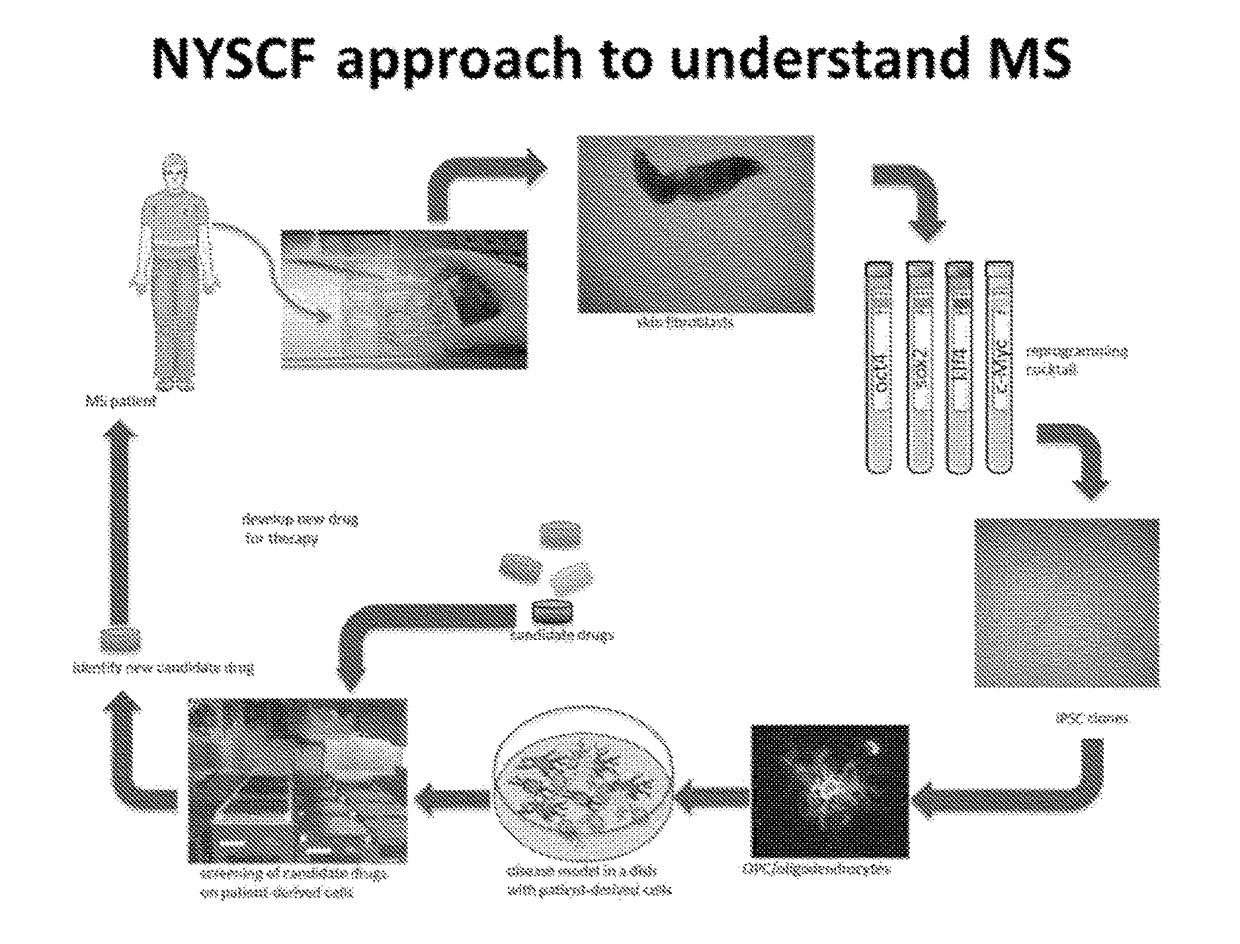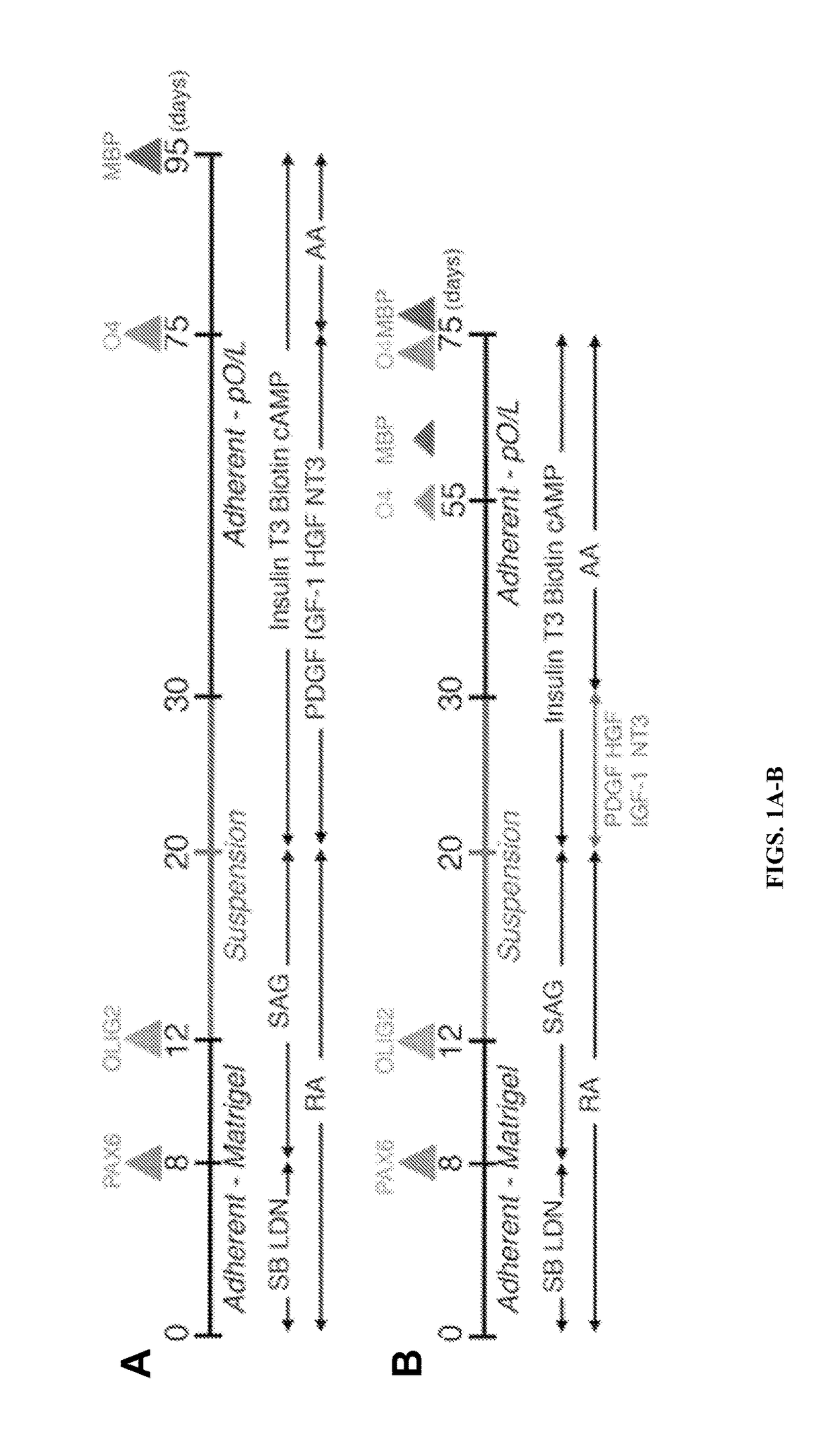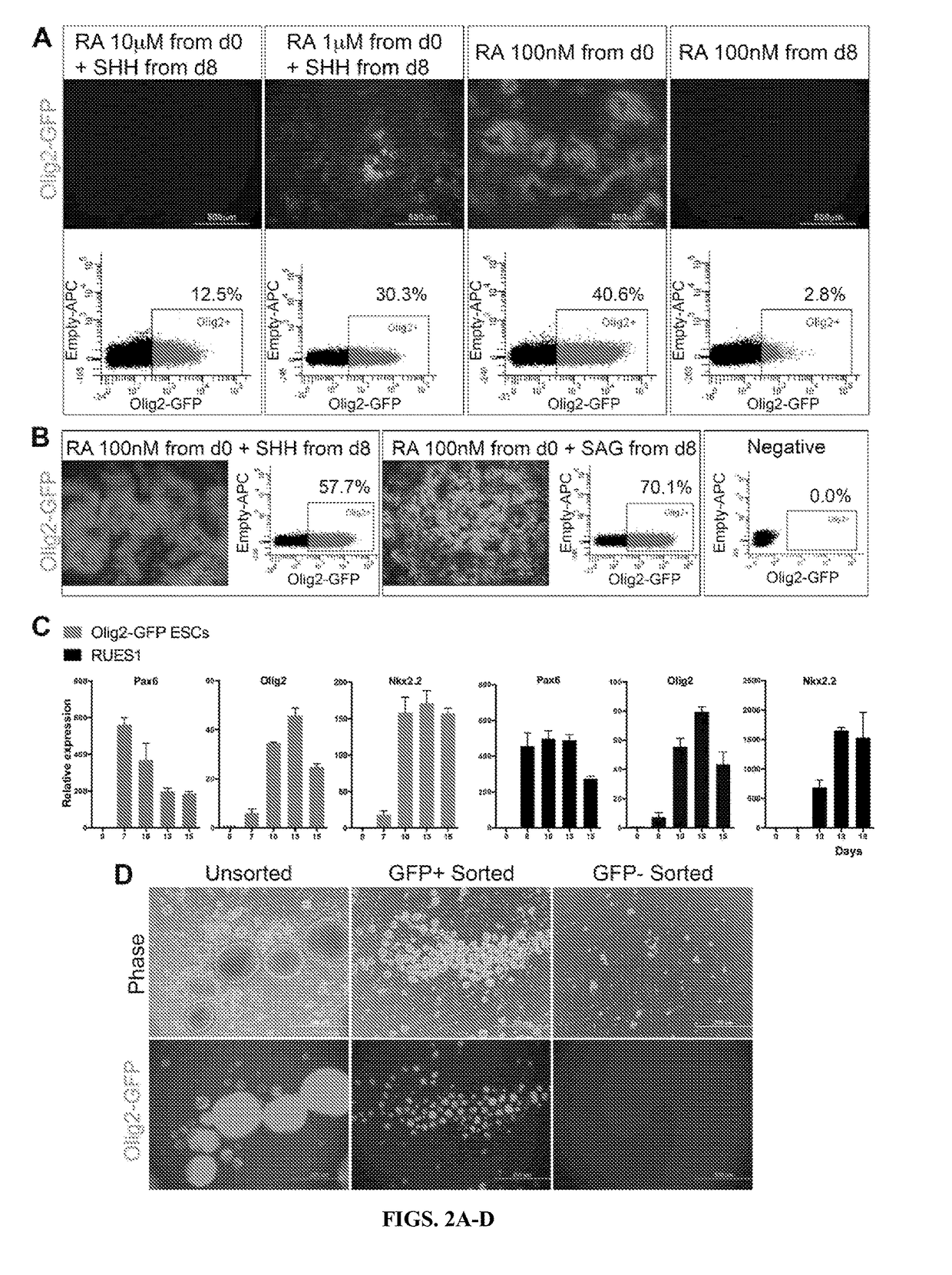Functional oligodendrocytes derived from pluripotent stem cells and methods of making and using the same
a technology of pluripotent stem cells and functional oligodendrocytes, which is applied in the field of functional oligodendrocytes derived from pluripotent stem cells, can solve the problems of affecting the reproducibility of ipsc lines, affecting the study of human oligodendrocyte biology and human myelination, and long and inefficient differentiation protocols
- Summary
- Abstract
- Description
- Claims
- Application Information
AI Technical Summary
Benefits of technology
Problems solved by technology
Method used
Image
Examples
example 1
iation of Oligodendrocytes from hESC Lines
[0066]We used an OLIG2-GFP knock-in hESC reporter line (Liu et al., 2011) to track OLIG2+ progenitors by live fluorescent imaging. First, we induced PAX6+ cells using dual inhibition of SMAD signaling in adherent cultures. Chambers, S. M. et al., Nat Biotechnol. 27:275-80 (2009). Next, to mimic the embryonic spinal cord environment, we applied different concentrations of RA and / or SHH at various times and quantified OLIG2-GFP expression through flow cytometry (FIG. 2A). Application of 100 nM RA from the beginning of induction generated 40.6% of OLIG2+ progenitors, whereas addition of SHH at 100 ng / ml from day 8 increased the yield to 57.7% (FIG. 2B). Interestingly, cells without exogenous SHH during the first 12 days, showed an upregulation of SHH mRNA (FIG. 3A) and differentiated to O4+ cells, although at lower efficiency compared to cells treated with SHH (FIG. 3B).
[0067]We then replaced the recombinant human SHH protein with SAG, which in...
example 2
iation of Oligodendrocytes from PPMS-iPSC Lines
[0075]To show that our protocol can be applied to iPSC lines, we obtained skin biopsies from four PPMS patients. Fibroblast cultures were established from the biopsies, and iPSCs were generated using daily transfections with a cocktail of modified mRNAs, (Warren et al., Cell Stem Cell. 7:618-30 (2010)), together with a cluster of miRNAs to improve the reprogramming efficiency for the most refractory lines (Stemgent). From day 12 to day 15 of reprogramming, TRA-1-60+ colonies (FIG. 8A) were identified by live staining, picked, expanded, and characterized by immunofluorescence for pluripotency markers (FIG. 8B).
[0076]Expression profiling for seven pluripotency genes confirmed that all four iPSC lines exhibited a profile comparable to a reference hESC line and divergent from the parental fibroblasts (FIG. 8C). All iPSC lines displayed a normal karyotype (FIG. 8D) and were able to differentiate into cell types of the three germ layers, both...
example 3
inate Mouse Brain by PPMS-Derived Late OPCs
[0078]To verify that OPCs obtained through our protocol were functionally myelinogenic, we injected day 75 FACS-purified O4+ cells (105 cells / animal) into the forebrain of neonatal, immunocompromised shiverer mice (FIG. 11A). The injected cells were depleted of any contaminant iPSCs, as shown by flow cytometry analysis of pluripotency markers SSEA4 and TRA-1-60 (FIG. 11B). However, we purified our cultures before in vivo transplantation to retain the potential for translation to clinical studies. Cells were frozen, thawed, and allowed to recover for 24-48 hours before transplantation (FIG. 11C). Animals were sacrificed at 12-16 weeks, at which point human hNA+ cells were distributed throughout the corpus callosum and forebrain white matter. The density of hNA+ cells in the corpus callosum at 12 weeks was 34,400±3,090 cells / mm3, and by 16 weeks, the number of human cells had approximately doubled since 12 weeks. We did not observe the presen...
PUM
 Login to View More
Login to View More Abstract
Description
Claims
Application Information
 Login to View More
Login to View More - R&D
- Intellectual Property
- Life Sciences
- Materials
- Tech Scout
- Unparalleled Data Quality
- Higher Quality Content
- 60% Fewer Hallucinations
Browse by: Latest US Patents, China's latest patents, Technical Efficacy Thesaurus, Application Domain, Technology Topic, Popular Technical Reports.
© 2025 PatSnap. All rights reserved.Legal|Privacy policy|Modern Slavery Act Transparency Statement|Sitemap|About US| Contact US: help@patsnap.com



